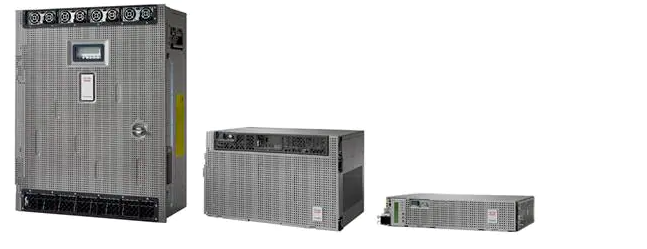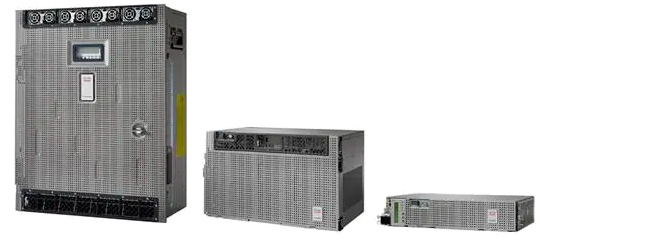Cisco Network Convergence System 2000
The Cisco® Network Convergence System (NCS) Family of products delivers an Evolved Programmable Network (EPN) that lets you simplify network operations, reduce network costs, and make your network more dynamic and profitable. The Cisco Network Convergence System 2000 Series (NCS 2000 Series) delivers agility, programmability, and massive scale across ultra-long-haul, metro, and enterprise optical networks.
Using the Cisco NCS 2000 Series, you can deploy a simple, yet intelligent dense wavelength-division multiplexing (DWDM) network that scales with operational ease. The Cisco NCS 2000 Series delivers agility with a touchless, flex-spectrum reconfigurable optical add/drop multiplexer (ROADM), and massive scale with 100- and 200-Gbps transponding and muxponding. Figure 1 shows three models of the Cisco NCS 2000 Series.

nLight ROADM Innovation
Over a decade ago, the Cisco ONS 15454 MSTP brought ROADM technology mainstream, allowing service providers, governments, and enterprises to deploy a simple, yet intelligent DWDM network that could scale with operational ease. The Cisco NCS 2000 Series evolves the Cisco ROADM portfolio by introducing Cisco nLight™ ROADM technology. By supporting touchless re-configurability through colorless, omnidirectional, and contentionless add/drop, networks built using Cisco nLight ROADM technology can instantly respond to new bandwidth requests, route around network failures, and dynamically adjust their topology. And they can do it all without manual intervention. Highly meshed networks will benefit from support of up to 40 degrees of connectivity, while flex-spectrum capability optimizes spectrum utilization while protecting your investment in the photonic layer. Innovative single-module ROADMs integrate wavelength switching and amplification into a single-slot line card, simplifying node configurations and minimizing footprint.
100G and Beyond
Continuing Cisco’s innovation in optical technology, nLight Silicon enables multirate DWDM line cards for the NCS 2000, which offer variable bit rates based on a software-configurable modulation scheme. The network operator can flexibly optimize the spectral efficiency and reach characteristics of each wavelength, improving network capacity and efficiency. State-of-the-art coherent digital-signal-processing (DSP) technology with soft-decision forward error correction (SD-FEC) enables 100-Gbps wavelengths to achieve unregenerated distances of up to 4500 km. Metro/regional networks can take advantage of 200-Gbps wavelengths, while ultra-long-haul networks can use 50-Gbps modulation to achieve transoceanic unregenerated distances.
Multilayer Network Intelligence
The Cisco NCS 2000 Series Wavelength Switched Optical Network (WSON) control-plane architecture enhances GMPLS capabilities with awareness of wavelength properties and optical impairments, offering dynamic service provisioning and restoration over a touchless DWDM network. Using a Cisco nLight Control Plane, the Cisco NCS 2000 Series intelligently interacts with packet layer devices, automating service provisioning, eliminating human error, and allowing advanced failure recovery.
Smooth Platform Integration and Interoperability
The Cisco NCS 2000 Series transparently integrates with the Cisco NCS 4000 at the network element, network management, and control plane levels, creating a unified packet optical transport system encompassing DWDM plus OTN and packet switching. The Cisco NCS 2000 Series also offers full support for Cisco ONS 15454 MSTP line cards, plus network level interoperability and unified management, helping ensure a smooth migration for customers with existing ONS 15454 MSTP networks.
Chassis Features and Options
The Cisco NCS 2000 Series offers three chassis variants to meet varying scale and space requirements. The Cisco NCS 2015 has 15 slots for service cards and is 14 rack units (14RU) high, allowing three chassis to fit into one standard rack (Figure 2). The Cisco NCS 2006 chassis is 6RU and has 6 slots for service cards (Figure 3). The NCS 2002 is 2RU and has 2 slots for service cards (Figure 4). Multishelf management allows multiple (up to 50) NCS 2015 and NCS 2006 shelves to be managed as a single network element, with a single target identifier (TID) and IP address, facilitating the construction of nodes with a very large number of ROADM degrees and/or service cards.
Cisco NCS 2000 Series chassis contain built-in memory to back up the software package, IP address, and circuit database. This built-in backup memory improves mean time to repair (MTTR) and increases operational simplicity. Also available on Cisco NCS 2000 Series chassis is the ability to connect passive devices via USB for performance and inventory management. Cisco NCS 2000 Series passive devices include memory containing device information, and photodiodes for measurement of power levels and connectivity verification. Table 1 compares the features.

